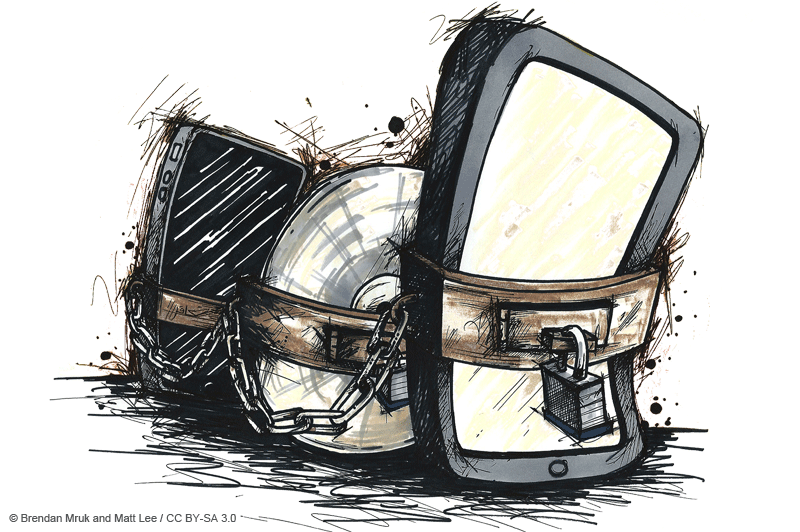You own nothing

This article is tagged with
#opinion, and thus you might not agree with me.
When I was a kid, Microsoft Office 2005 was a thing. If some classmate sent me
a .doc from Microsoft Office 2007 there would be some incompatibility around
the corner somewhere. Thing is, years went by and you still had full access to
your Microsoft Office 2005 program. It was yours. Same with Photoshop CS4 to 6
. Now, if you cancel your 19.99 € monthly subscription to Adobe Creative Cloud,
good luck opening your .psd files.
In fact, they recently removed colors (Pantone) from Photoshop, even if your
.psdfiles are old! Do I have to pirate colors now?
Of course I switched to their Free Open Source counterparts such as OnlyOffice, Gimp and Inkscape.
This world is now ruled by monthly subscriptions to everything. You are most likely renting a lot of things you would say you own, but you really don’t own almost anything.
But, what about the things you buy for real? The so called one-time purchases? Big Corps have been pulling every play on their book to keep you hooked to their services for as long as they can, attempting to squeeze as much revenue from you as possible. Hell, restrictive warranties from phone manufacturers is starting to feel like you don’t own your phone. You replaced the screen yourself? Well, now it is out of warranty. Why aren’t there original replacement parts available? You got a third-party replacement? If they really cared for the environment they would show some support for local workshops or self-service repairments instead of removing the charger from the box.
Yes, we removed the charger from the box. Use the ones you already have! But if the battery is swollen, no doubt they will dismiss the warranty request on the grounds of the charger not being the original.
In this article I will exclude things I consider as renting, such as Netflix, Spotify and others. I consider I own nothing on this platforms and I am renting my access to those monthly.
DRM⌗

Let’s tackle the elephant in the room: DRM or Digital Rights Management is there to protect the content being delivered to the end consumer. You will see this if you try to take a screenshot when watching Netflix on your phone (content should appear black). It is there to prevent piracy, but it is also there to avoid the end user owning what they just bought.
Some years ago (and some still remains) one would buy a Blu-Ray movie and have a physical item they could enjoy at their house. It was also protected against piracy with some RIP protections, but it was yours. The physical part of it made it yours. Same occurred with software: it would come in a box with a CD, license code and installation/usage manual. Now that those are gone, it is starting to feel like NFTs. In the digital era, copies of an item are free and can be infinite (up to the demand, really), while Blu-Ray’s were limited on quantity (and there were manufacturing costs).
Taking it further: let’s take a book you just bought on Amazon. You can, after
searching for a while, download the .mobi, .epub or .kff file. Well, it
turns out that this file is still not yours. You can’t get this file to your
tablet to read it there. This is because Amazon provides your devices and
account with a license to use that book (and unlocks it for you on your
devices, but it won’t do that outside their platform). So you are out of luck
if you want a PDF.
It isn’t the first time I find myself doing some piracy to get the PDF out of the book I just bought.